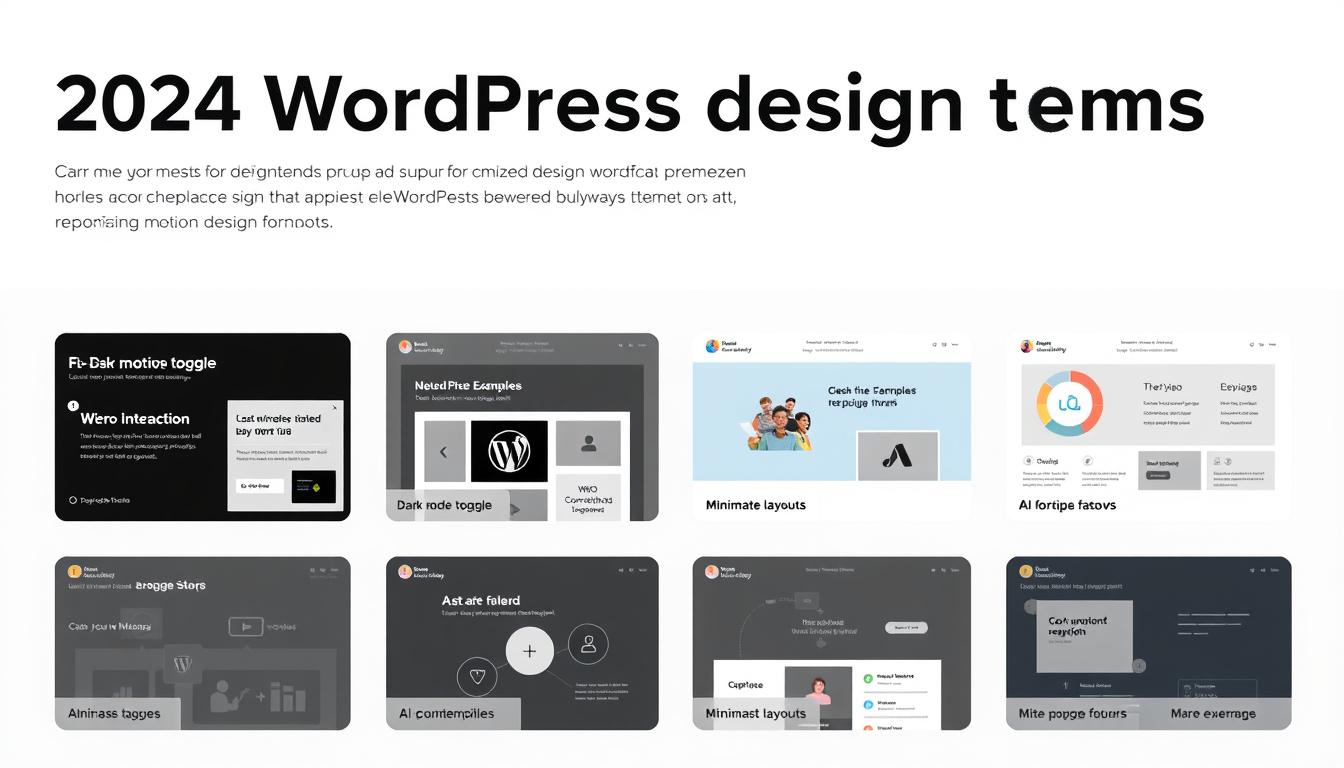Welcome to the world of responsive design! As the use of mobile devices continues to grow, it’s become increasingly important to ensure your website provides a user-friendly experience on any device. This is where responsive design comes in. By optimizing your website to adapt to different screen sizes and resolutions, you can enhance the user experience and improve website performance.
In this article, we will explore the concept of responsive design and its benefits, as well as provide practical tips and best practices to follow. We’ll also address common concerns and FAQs related to responsive design. Let’s dive in and learn how to master the art of responsive design for optimal web experience!
Understanding Responsive Design
Responsive design is an approach to web development that emphasizes creating a mobile-friendly website that adapts to different screen sizes and resolutions.
With the rise of mobile devices, it’s crucial for websites to provide a seamless user experience on any device. Responsive design achieves this by rearranging content and adjusting the layout of a website to fit the smaller screens of mobile devices.
Responsive design differs from adaptive design, which involves creating multiple versions of a website optimized for specific devices. In contrast, responsive design uses one flexible design that can adjust to any screen size.
When implementing responsive design, it’s essential to consider the user’s perspective and ensure that the website is easy to navigate and use on any device. This requires careful attention to design and functionality, including touch-friendly buttons and menus and easy-to-read text.
Benefits of Responsive Design
Implementing responsive web development has numerous advantages, including:
| Benefit | Description |
|---|---|
| Improved Mobile Optimization | A responsive website design ensures that your website is easily accessible and navigable on any device, resulting in enhanced mobile optimization. |
| Enhanced User Experience | Responsive design provides a seamless and user-friendly experience, reducing bounce rates and improving conversions. |
| Increased Website Performance | A mobile-friendly website is more likely to perform better and load faster, improving overall website performance. |
By prioritizing responsiveness, you can provide an optimal web experience for your users while also improving the performance and accessibility of your website.
Responsive Design vs. Mobile Apps
While responsive design allows websites to be viewed on any device, there are still advantages to creating a native mobile app. However, the benefits of using responsive design outweigh those of mobile apps in many cases.
Responsive design allows for a consistent user experience across all devices, whereas native apps can only be downloaded and used on certain platforms. Additionally, responsive design eliminates the need for separate development and maintenance of a mobile app, which can be costly both in terms of time and resources.
With responsive design, users can access the same content and features on a website regardless of the device they are using. Native apps, on the other hand, require users to download and install them before accessing any content or features.
While native apps can provide some unique features and functionality that are not possible on a website, responsive design can achieve many of the same benefits through responsive UI/UX design. This means that a website designed with responsive design can be just as functional and user-friendly as a native app.
Ultimately, the choice between responsive design and native apps depends on the specific needs and goals of a business. However, in most cases, responsive design provides a more practical and cost-effective solution for creating a mobile-friendly website with a user-friendly interface.
Responsive Website Frameworks
When it comes to implementing responsive design, using a website framework is an effective way to ensure compatibility across devices and browsers. Here are some popular responsive website frameworks to consider:
| Framework | Description |
|---|---|
| Bootstrap | A widely-used framework with a comprehensive set of tools and features that make it easy to create responsive websites. |
| Foundation | Another popular framework with a focus on customizability and flexibility, making it a great choice for designers and developers. |
| Bulma | A modern CSS framework that emphasizes simplicity and ease of use, with built-in support for responsive design. |
| Materialize | A framework based on Google’s Material Design language, offering responsive components that can be easily customized and styled. |
When choosing a responsive website framework, it’s important to consider your specific needs and goals, as well as the framework’s level of support and documentation. Following responsive design guidelines and best practices is crucial for creating a user-friendly website that performs well on any device.
Responsive Web Design Best Practices
As you implement responsive design, it’s important to follow best practices to ensure your website performs well across multiple devices. Here are some tips:
1. Design for mobile first
Start with the smallest screen size and work your way up. This ensures that your website is optimized for the most popular devices.
2. Keep it simple
Minimize clutter and focus on the most important information. This keeps your website clean and easy to use.
3. Use clear and readable fonts
Choose fonts that are easy to read on any screen size. Sans-serif fonts work well on smaller screens, while serif fonts are better suited for larger screens.
4. Optimize images
Use optimized images to improve website performance. Compress images to reduce file size without sacrificing quality.
5. Prioritize content
Ensure that the most important content is displayed prominently on all screen sizes. This helps users quickly find what they’re looking for.
6. Test on multiple devices
Test your site on multiple devices and screen sizes to ensure that it performs well across all platforms.
By following these best practices, you can create a responsive website that delivers an optimal user experience on any device.
Responsive Design Testing and Optimization
Testing and optimizing responsive web designs is crucial to ensure that they perform optimally, regardless of the device or platform. Here are some tips to help you test and optimize your responsive designs:
| Tip | Description |
|---|---|
| Plan and Test Your Design | Take time to plan and test your design on different devices and screen sizes, ensuring that it performs well and is compatible with different browsers. |
| Use Responsive Testing Tools | Use responsive testing tools to check how your website looks and functions across different devices and screen sizes, identifying and fixing any issues in the process. |
| Optimize Your Images | Optimize your images for different screen resolutions, using appropriate image sizes and compression techniques for faster loading times and better user experience. |
| Minimize Page Load Times | Minimize page load times by reducing the size of your CSS and JavaScript files, using browser caching and compression techniques, and leveraging content delivery networks (CDNs). |
| Test for Accessibility | Ensure that your website is accessible to users with disabilities, using tools and techniques such as alt tags, ARIA labels, and keyboard navigation testing. |
| Conduct Regular QA Testing | Conduct regular quality assurance (QA) testing to identify and fix any issues that may arise, ensuring that your responsive design performs optimally at all times. |
By following these tips and best practices, you can test and optimize your responsive web design, delivering a flawless user experience across all devices and platforms.
Why Responsive Design Matters for SEO
Search engine optimization (SEO) has become an integral part of website development. With the majority of online searches now happening on mobile devices, having a responsive website has become a crucial factor for better rankings and search results.
Responsive design ensures that your website is accessible and user-friendly across all devices, including smartphones, tablets, and desktops. Google has recognized the importance of mobile optimization and made it a ranking factor in its search algorithms. Websites that are not optimized for mobile devices may see a decrease in traffic and rankings.
Additionally, responsive design allows for better user engagement and lower bounce rates. Users are more likely to stay on a website that is easy to navigate on their device, leading to longer visit times and increased conversion rates.
Impact on Local SEO
Local SEO is another important aspect of website optimization for businesses that have a physical presence. Responsive design can help businesses maintain a consistent online presence, making it easier for users to find their location and access relevant information.
Furthermore, mobile optimization can improve the accuracy of location-based searches, leading to higher visibility and customer engagement. With the rise of voice search capabilities on mobile devices, having a responsive website that is optimized for local SEO is more important than ever.
Conclusion
Investing in responsive design is crucial for website optimization and SEO. By prioritizing mobile-friendly websites, businesses can improve their online presence, increase user engagement, and ultimately drive more traffic and conversions. As mobile usage continues to grow, responsive design will become even more important for businesses to stay competitive in the ever-evolving digital landscape.
The Future of Responsive Design
Responsive design has come a long way since its inception, and the future looks bright for this innovative approach to web development. With the continued growth of mobile usage, responsive design will remain a crucial aspect of website optimization. Here are some future trends to keep in mind:
- Greater emphasis on mobile optimization: As mobile devices become the primary mode of internet access, there will be a greater emphasis on mobile optimization and usability. Websites will need to be designed with mobile-first principles and accommodate touch-based navigation.
- Advanced user interfaces: The advent of new web technologies will enable the creation of more advanced and interactive user interfaces. Websites will be designed with more fluid and dynamic elements to create a more engaging user experience.
- Increased use of AI: Artificial intelligence will play a significant role in the future of responsive design. AI-powered chatbots and voice assistants will become more prevalent, and websites will need to be optimized for natural language processing and other AI applications.
Overall, the future of responsive design is exciting, as it continues to evolve and adapt to the changing needs of website users. By staying up-to-date with the latest trends and best practices, website owners can ensure their sites are optimized for optimal performance and user experience.
FAQ – Frequently Asked Questions
What is responsive design?
Responsive design is an approach to website development that ensures optimal user experience regardless of the device or screen size. It involves creating a website that adapts to different resolutions and provides an easy-to-navigate layout.
Why is responsive design important?
Responsive design is crucial in today’s digital landscape, where mobile usage is rapidly increasing. A mobile-friendly website not only provides a better user experience but also ranks higher in search engine results, leading to increased traffic and higher conversion rates.
Do all websites need to be responsive?
Yes, all websites should strive to be responsive to provide the best possible experience for their users. With the majority of internet traffic coming from mobile devices, a website that is not optimized for mobile can result in high bounce rates and lost revenue.
Can I update my current website to be responsive?
Yes, it is possible to update an existing website to be responsive. However, it may require significant changes to the website’s code and design, and it is recommended to hire a professional web developer to ensure optimal results.
What are some best practices for implementing responsive design?
Some best practices for implementing responsive design include designing for mobile first, using flexible and scalable images, optimizing page speed, and testing across a variety of devices and browsers.
How do I test my website’s responsiveness?
There are several tools available to test your website’s responsiveness, including Google’s Mobile-Friendly Test and BrowserStack. It is also recommended to manually test your website across a variety of devices and browsers to ensure optimal performance.
What is the difference between responsive design and mobile apps?
Responsive design involves creating a website that adapts to different screen sizes and resolutions, while mobile apps are native applications designed specifically for mobile devices. Both approaches have their advantages, and the choice depends on the specific needs and goals of the website or business.
How does responsive design impact SEO?
Responsive design can have a significant impact on SEO, as Google prioritizes mobile-friendly websites in search results. A responsive website ensures improved user experience, faster page load speeds, and decreased bounce rates, all of which contribute to higher search engine rankings.
What is the future of responsive design?
The future of responsive design is focused on mobile optimization and improving the overall user experience. Advancements in technology, such as 5G and AI, will continue to shape the evolution of responsive design and lead to even more personalized and intuitive website experiences.






